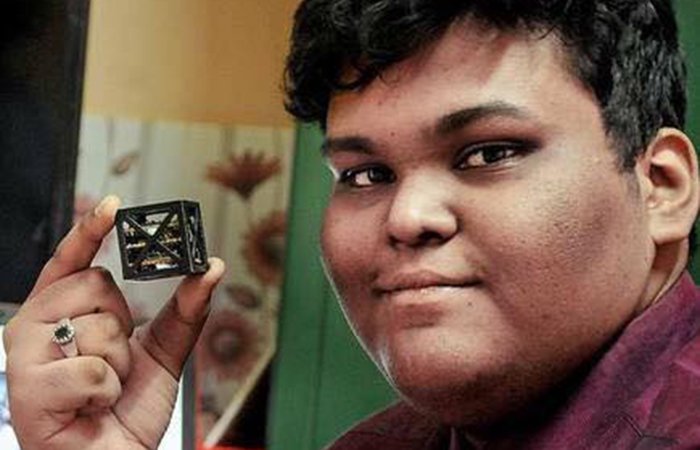History was made and the ascendency of India’s space explorations was once again asserted when the National Aeronautics and Space Administration (NASA) launched the world’s lightest satellite into space which was designed by an Indian teenager. It was for the first time that NASA piloted an experiment created by an Indian student.
Invented by 18-year-old Rifath Shaarook and his team, the satellite weighs only 64 grams. It was named KalamSat after India’s former President and the eminent nuclear scientist Dr. A. P. J. Abdul Kalam and was launched from NASA’s Wallops Flight Facility in Virginia.

Shaarook’s invention was selected through a competition called ‘Cubes in Space’ which was jointly sponsored by NASA and I Doodle Learning, a global education company. Talking about the challenges faced while designing the satellite, Sharook told ANI:
“The main challenge was to design an experiment to be flown to space which would fit into a four-centimeter cube weighing 64 grams.”
Srimathy Kesan of Space Kidz India, who supervised the project, tweeted the news after the successful launch of the satellite.
Successful launch of KALAMSAT, World’s lightest and the 1st 3D printed satellite by NASA from NASA, Wallops- Virginia today. Moment of pride pic.twitter.com/6bWLvW2aj5
— Dr.Srimathy Kesan (@KesanSrimathy) June 22, 2017
Sharook’s KalamSat is the first satellite to be 3D printed which has reinforced carbon fiber polymer and a nano Geige Muller counter to measure radiation in space. The tiny satellite spent 12 minutes in the space before falling into the sea. Talking to the Times of India, Kesan said:
“KalamSat fell into the sea. It will be recovered and NASA will be sending it back to us for decoding the data.”

Sharook, who’s equally excited to see the results told ANI:
“We are looking to inspect the 3D structure, after that, we are eager to collect the data on the onboard computer.”
Great job, Rifath!

















